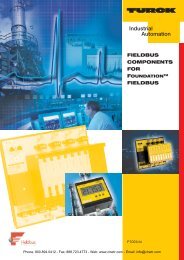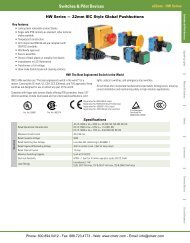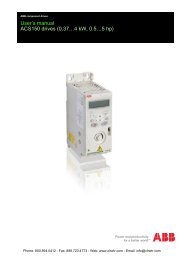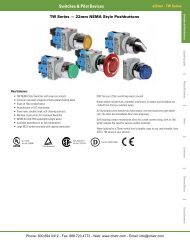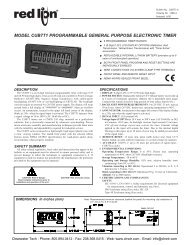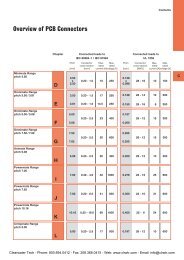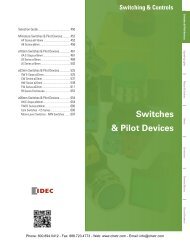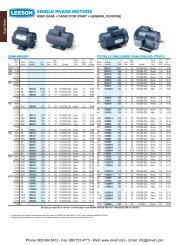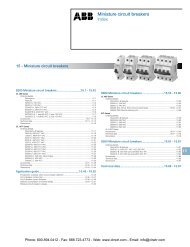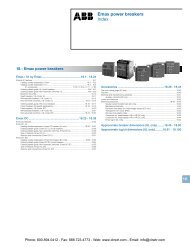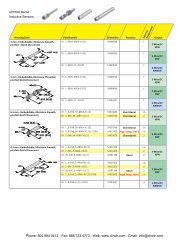IDEC / Datasensor Sensors - Clearwater Technologies, Inc.
IDEC / Datasensor Sensors - Clearwater Technologies, Inc.
IDEC / Datasensor Sensors - Clearwater Technologies, Inc.
Create successful ePaper yourself
Turn your PDF publications into a flip-book with our unique Google optimized e-Paper software.
Distance: MX1C<br />
<strong>Sensors</strong><br />
Distance: MX1C<br />
Self-Contained Laser Displacement <strong>Sensors</strong><br />
Communication & Networking<br />
Operator Interfaces<br />
PLCs<br />
Automation Software<br />
Power Supplies<br />
•<br />
•<br />
•<br />
•<br />
•<br />
•<br />
•<br />
•<br />
Analog output (20 to 4mA) can be selected for continuous values;<br />
digital output (on/off) can be used; or both can be used together<br />
Miniature sensor head is compact for high-density installations<br />
Visible beam is easy to align with target<br />
Adjustable response speed<br />
Shape, size, color and material do not detract from accurate<br />
measurement (see note)<br />
Wide sensing range: 2.36” to 6.30” (60mm to 160mm)<br />
A ten-dot dynamic display shows detected positions<br />
Alarm output indicates when sensing conditions may result in<br />
inaccurate results<br />
The MX1C is a self contained laser displacement sensor. Featuring a small size and high resolution of 50<br />
microns (0.002”), the MX1C is perfect for small mounting areas with delicate applications. The MX1C is easy<br />
to align with its visible Red laser.The MX1C offers a 4-20mA analog output, and, a discrete transistor output<br />
for displacement determination.<br />
The MX1C utilizes triangulation to determine object displacement. The sensor head projects a laser beam to<br />
the object. The diffuse-refl ected light from the object’s surface is received as a spot image. This spot image<br />
moves from position A to B on the PSD (position sensitive device). Optical triangle is used to compute the<br />
exact distance between the sensor and the object.<br />
1. Laser sensing of mirror-like surfaces is not recommended. For best results detecting refl ective surfaces, tilt the sensor to<br />
reduce direct laser reflection. Sensing at a small angle (approximately ±10°) does not signifi cantly reduce sensing accuracy<br />
or linearity of resulting analog output.<br />
2. WARNING: Class IIIa laser. Do not allow the laser to shine directly into the eyes. Always consider eye safety when installing<br />
a laser sensor. Make sure that the laser beam cannot inadvertently shine into the eyes of people passing by or working in<br />
the vicinity. See laser safety information on page 232.<br />
<strong>Sensors</strong><br />
Center of<br />
Projection<br />
Dimensions (mm)<br />
(M4) Tapped<br />
Two Places<br />
216 <strong>Clearwater</strong> Tech - Phone: 800.894.0412 - Fax: 208.368.0415 www.idec.com- Web: www.clrwtr.com - Email: info@clrwtr.com




